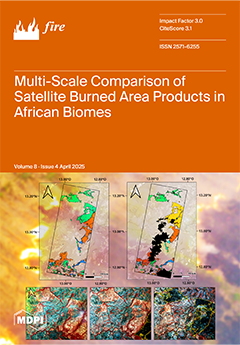With the development of society and the advancement of technology, the application of electricity in modern life has become increasingly widespread. However, the risk of electrical fires has also significantly increased. This paper thoroughly investigates the causes, classifications, and challenges of electrical fires
[...] Read more.
With the development of society and the advancement of technology, the application of electricity in modern life has become increasingly widespread. However, the risk of electrical fires has also significantly increased. This paper thoroughly investigates the causes, classifications, and challenges of electrical fires in special environments, and summarizes advanced detection and extinguishing technologies. The study reveals that the causes of electrical fires are complex and diverse, including equipment aging, improper installation, short circuits, and overloading. In special environments such as submarines, surface vessels, and aircraft, the risk of electrical fires is higher due to limited space, dense equipment, and difficult rescue operations. This paper also provides a detailed analysis of various types of electrical fires, including cable fires, electrical cabinet fires, transformer fires, battery fires, data center fires, and residential fires, and discusses their characteristics and prevention and control technologies. In terms of detection technology, this paper summarizes the progress of technologies such as arc detection, video detection, and infrared thermography, and emphasizes the importance of selecting appropriate technologies based on specific environments. Regarding extinguishing technologies, this paper discusses various means of extinguishing, such as foam extinguishing agents, dry powder extinguishing agents, and fine water mist technology, and highlights their advantages, disadvantages, and applicable scenarios. Finally, this paper identifies the limitations in the current field of electrical fire prevention and control, emphasizes the importance of interdisciplinary research and the development of advanced risk assessment models, and outlines future research directions.
Full article





